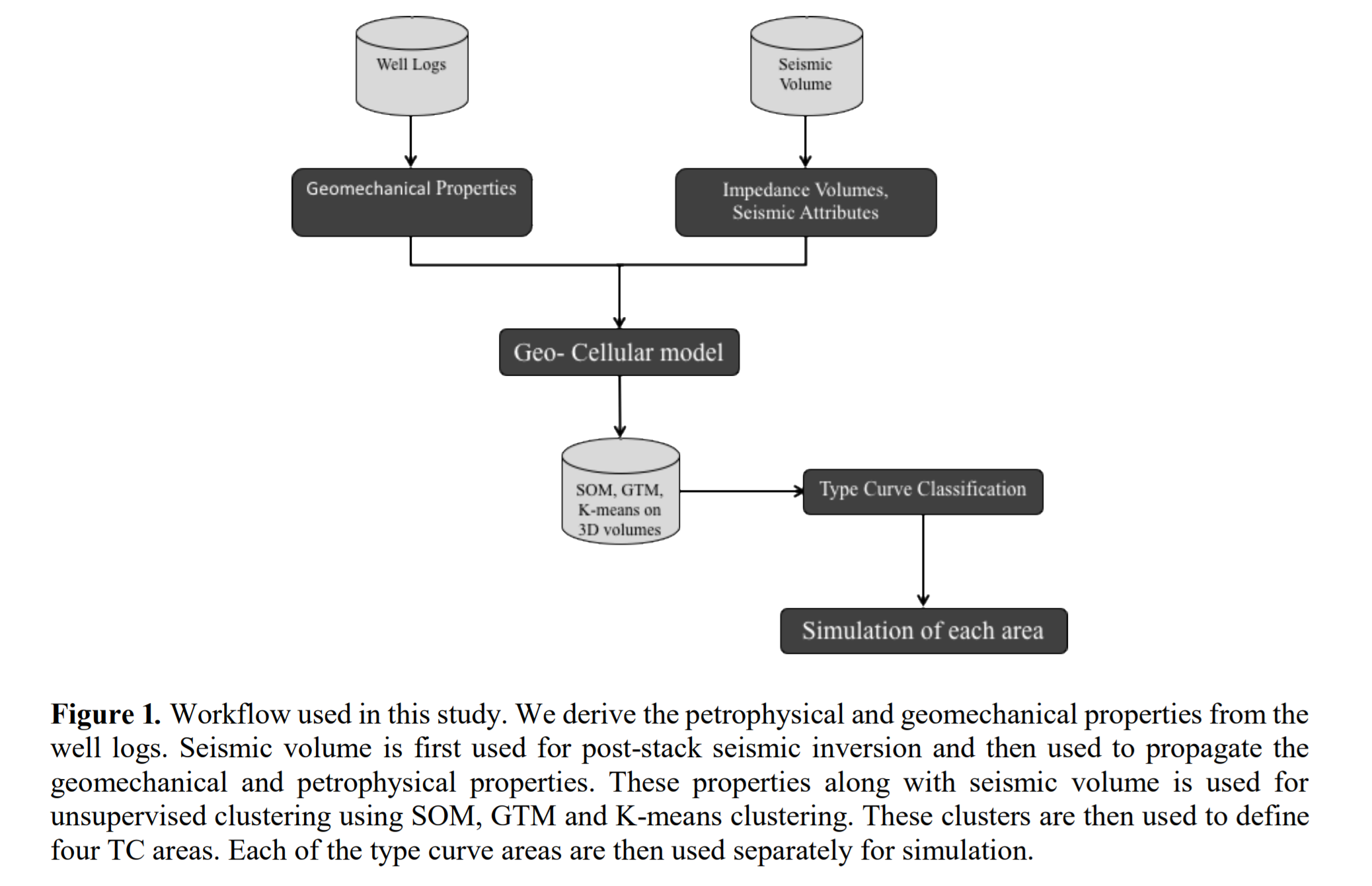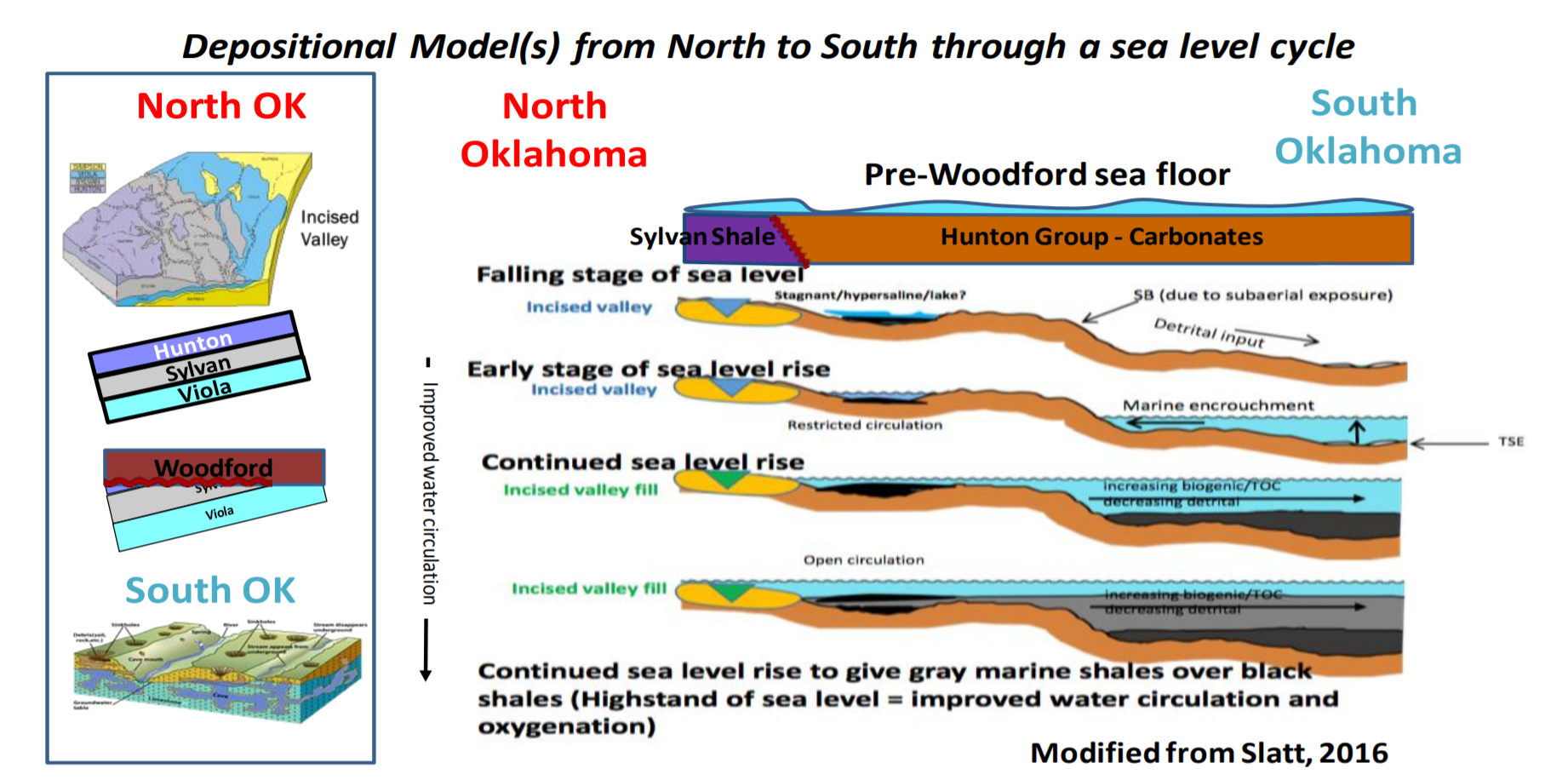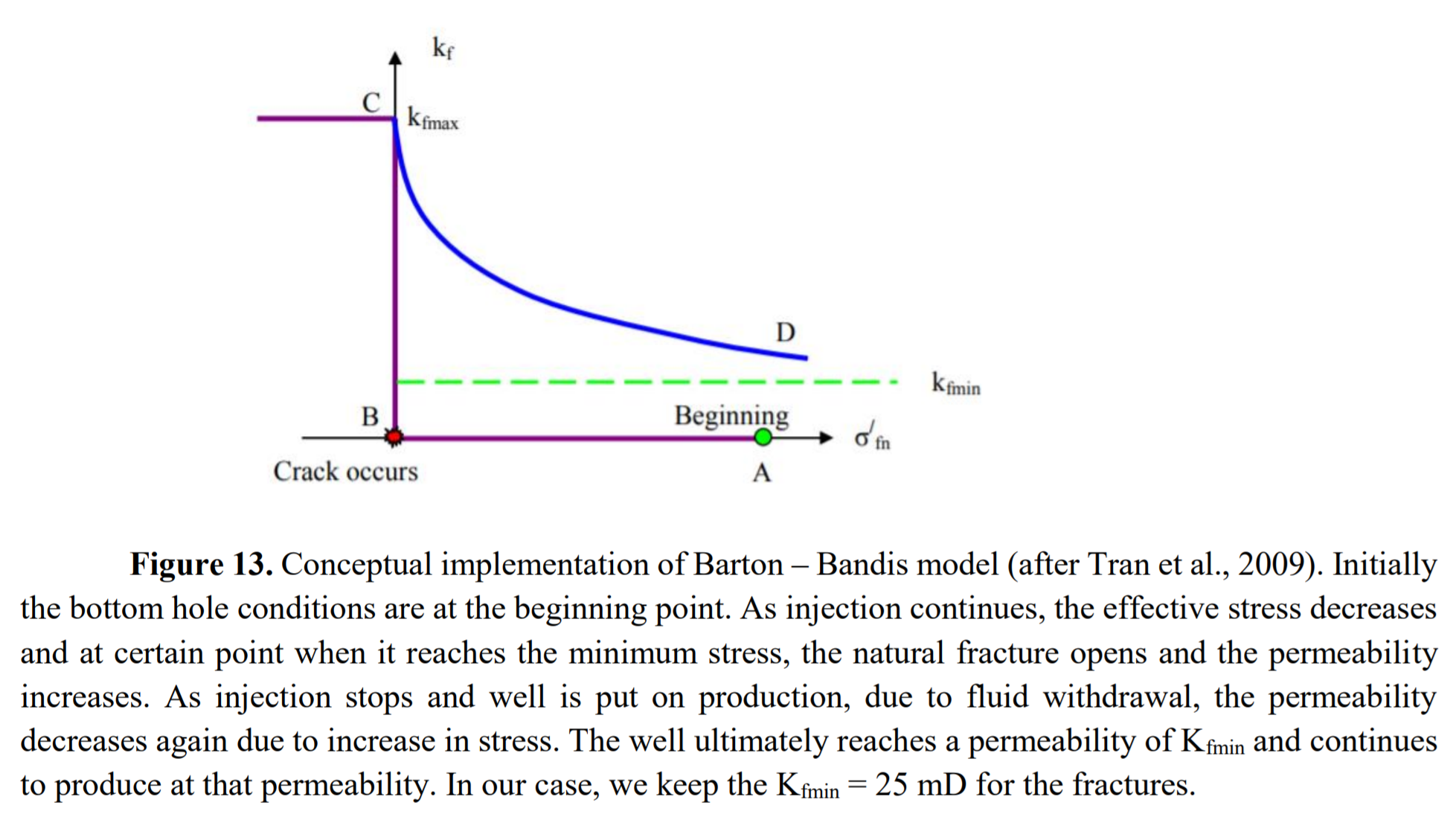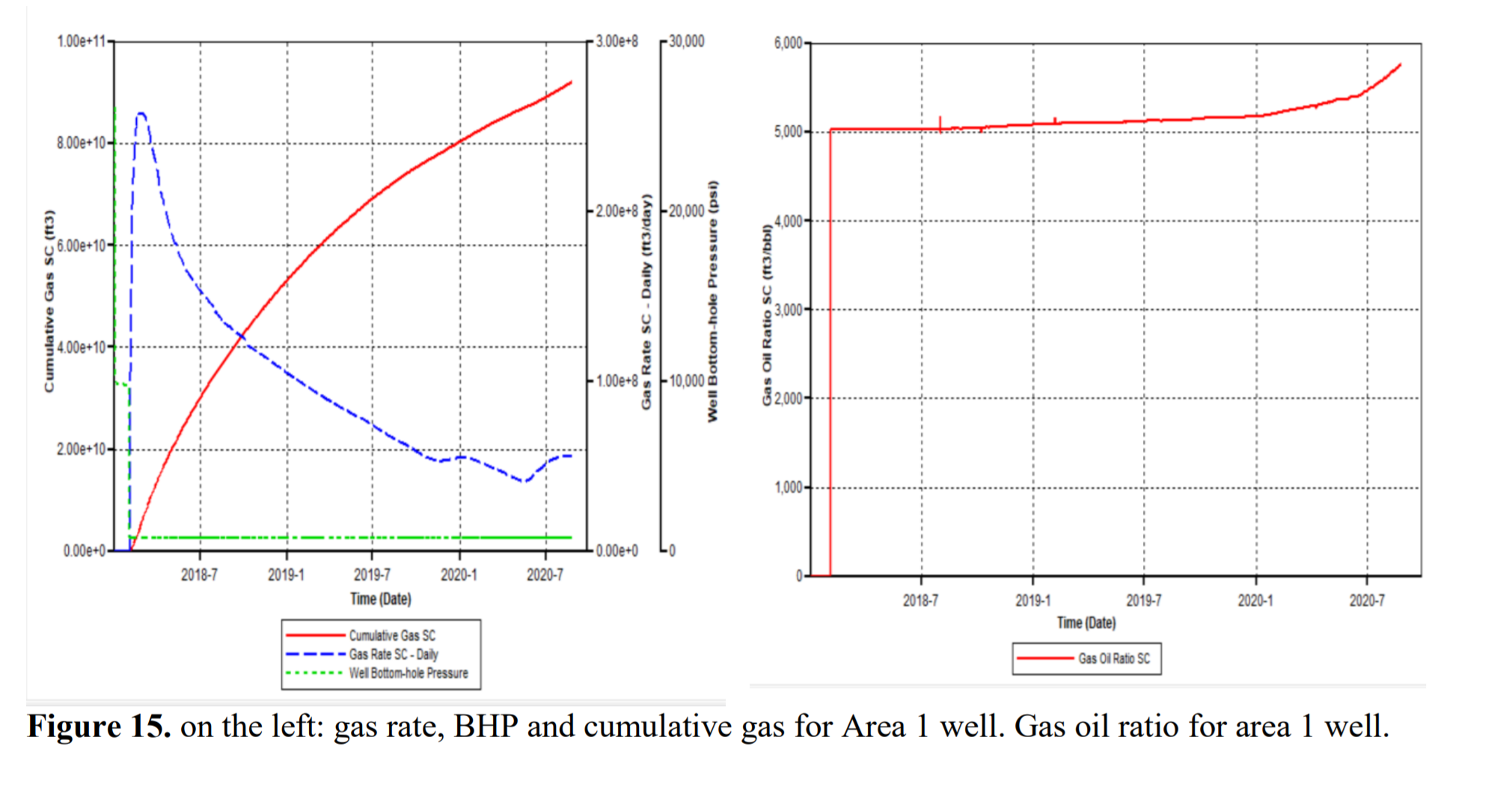Seismic to Simulation: Woodford Shale Case Study in Oklahoma, USA
摘要
本研究的目的是利用各种尺度的数据进行储层描述和数值模拟。研究区域是俄克拉荷马州的伍德福德页岩地层。由于含油层多,储量大,伍德福德页岩备受俄克拉荷马州主要石油公司关注。
在本研究中,我们使用测井曲线获得了垂向高分辨率的岩石物理和地质力学物性,如孔隙度、总有机碳(TOC)、杨氏模量、剪切模量、Biot’s系数、泊松比、应力等。使用地震反演导出的阻抗体积来约束模型中的这些属性,以获得更准确的地层数据。为了获得类型曲线(TC),使用了无监督机器学习方法,如自组织图(SOM)和生成地形图(GTM),将储层属性聚类在一起。
从这些簇中,我们确定了四个类型曲线(TC)区域。为了证明这四种类型曲线区域的物理意义,我们使用了CMG-GEM全组分、全耦合地质力学的状态方程(EOS)模拟器来模拟压裂改造体积(SRV)作为应力和最终产量的函数。
结果表明,地震到生产一体化研究更好地描述储层,增强静态模型的可信度。在所有聚类技术中,SOM效果最好,并且与区域地质认识一致。更多的地震数据提供了更好的地质力学属性水平控制,进一步用于SRV模拟以及EUR预测。
Our results show, the integration from seismic to production scale provides excellent control on the reservoir characterization and bolsters confidence on the static model. Out of all clustering techniques, SOM works best in our case and is consistent with the regional geology. More number of samples in case of seismic provides better horizontal control on geomechanical properties and hence modeling of the SRV and ultimately predicting production behavior.
Abstract
The objective of our study is to use data from every scale for reservoir characterization and eventually reservoir simulation. The current area of study is Woodford Shale in Oklahoma. Due to enormous pay zone and thus oil and gas reserves, Woodford Shale is the center of attraction for major oil operators in Oklahoma currently.
In this study we have used well logs to obtain high vertical resolution petrophysical and geomechanical properties such as: Porosity, total organic carbon (TOC), Young’s Modulus, Shear Modulus, Biot’s coefficient, Poisson’s ratio, stresses etc. We have used seismic inversion derived impedance volumes to populate these properties in the model area to obtain better stratigraphic control on these properties. To obtain the type curves (TC’s), we have used unsupervised machine learning methodologies such as Self Organizing maps (SOM) and generative topographic mapping (GTM) to cluster the reservoir properties together.
From these clusters, we have identified four type curve (TC) areas. To demonstrate the physical significance of these four type curve areas, we have used a fully compositional, fully coupled geomechanical Equation of State (EOS) simulator to simulate the Stimulated Rock Volume (SRV) as a function of stress and eventually production.


Reservoir Simulation We have selected four type curve areas for simulation in our study based on the seismic and well logs derived clusters. We use a 5,000 Ft. lateral length of the wells in our area to perform our simulation based on most accepted industry standards in vicinity areas. To fully capture the fluid effects, we use a fully compositional rich condensate representative PVT in the area.
We use the same fluid in all the areas as the primary aim of this study is to identify the type curves based on reservoir properties that can be known ahead of the drilling and not the fluid properties which can vary and alter the Recovery Factors (RF’s). For geomechanical coupling, we use a fully coupled Barton-Bandis model (Bandis et al., 1983) in a dual porosity setup. Figure 13 shows the conceptual implementation of this model in which the permeability of the natural factures is coupled in the model as the minimum effective stress. As the injection is carried out in a typical hydraulic fracturing scenario, the minimum effective stress decreases, eventually increasing the permeability of the natural fractures.


